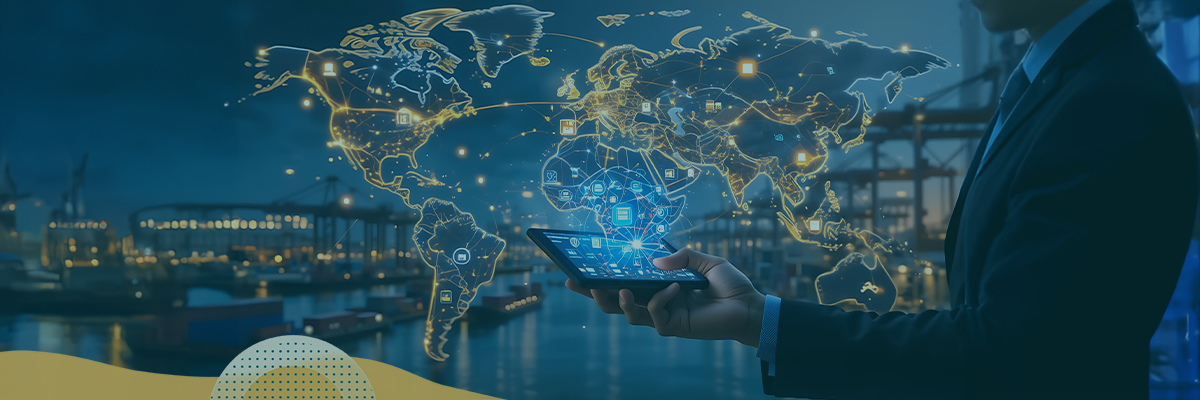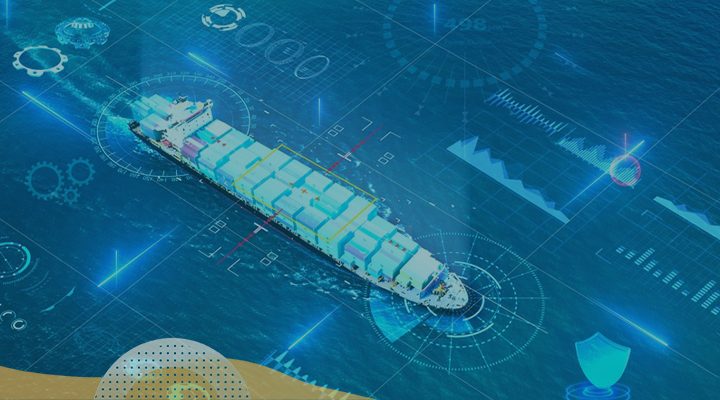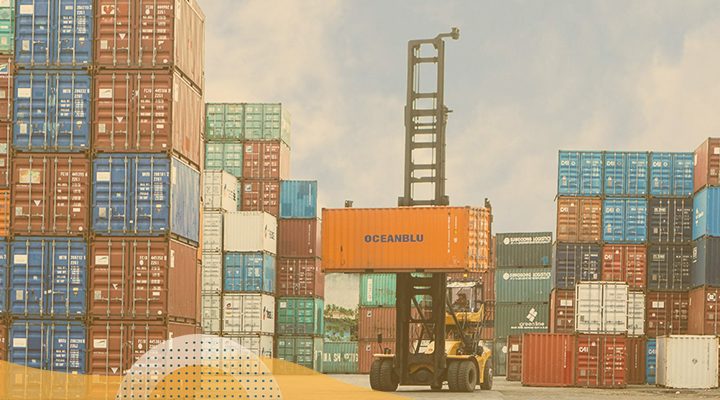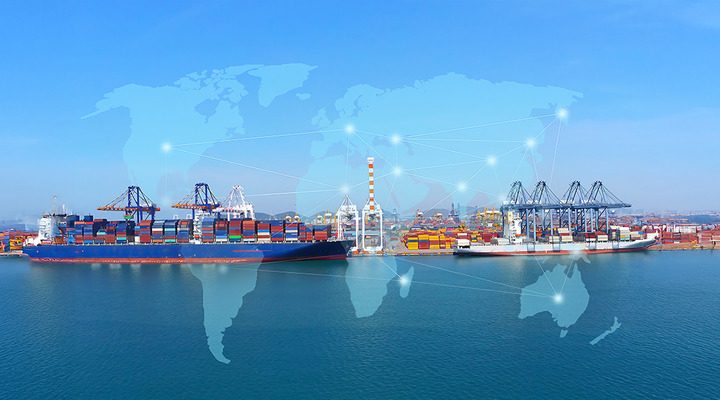Global trade has never been more complex. Regulations shift daily, tariffs rise and fall, and international supply chains are under constant pressure. The smallest error in data or process can lead to penalties, delays, or lost opportunities, with a lasting impact on cash flow and profitability.
Moreover, different sectors of industry face unique challenges that require tailored solutions. So, where pharmaceutical companies worry about cold chain integrity, automotive manufacturers struggle with just-in-time delivery, while steel producers navigate the challenge of managing variants and break-bulk consignments.
A single misclassification, a missing field in a declaration, or an overlooked incentive can mean penalties equal to 10–15% of shipment value, delays of 7–14 days, or cash flow hits in the millions.
Organizations worldwide are turning to artificial intelligence to meet such challenges. Typically, AI is bolted on retrospectively to existing structures. At Trezix, on the other hand, AI is purpose-built at the core.
We knew that generic solutions can’t really meet the varied needs of different industries. Therefore, we have collaborated with our customers to ideate and develop AI-powered vertical solutions that address their most pressing industry challenges and deliver tangible impact to their businesses.
Our approach to AI in global trade management can be summed up in three words: Prevent, Predict, and Transform.
AI is helping businesses prevent costly mistakes, predict risks before they hit, and transform their cross-border trade operations.
Together, these three elements of AI in global trade management help organizations improve operational speed and efficiency and make better decisions with a “human in the loop” approach.
Let’s look at this in greater detail.
Prevent: Secure Your Operations
Deployed strategically, AI can secure your trade operations, catching anomalies and errors before they impact you.
Avoid compliance challenges
Managing trade compliance needn’t mean drowning in paperwork anymore. Today’s AI-powered platforms take over the heavy lifting of document processing—invoices, certificates of origin, packing lists, shipping manifests—identifying missing fields, incorrect HS/HTS codes, and mismatched invoices before filings get rejected.
Trezix Tip: Platforms like Trezix achieve over 95% compliance accuracy, automating HS code classification, duty calculations, and document generation in multiple formats.
Turn classification into opportunity
We’ve all seen how misclassified goods can derail shipments and cause duty overpayments while you miss entitled incentives.
With AI, compliance can go from being a cost center to a profit opportunity.
AI classification systems analyze product attributes, end-use, and prior rulings to recommend accurate HS/HTS codes and surface applicable incentives before you finalize documentation.
No more missed incentives or unforced documentation errors.
Enable quality control
Some of the costliest compliance failures happen at the factory level. So, catching issues at this stage saves more than shipping costs—it protects your relationships with customers and regulators.
Companies like Unilever now leverage AI tools to validate everything from certificates of origin to labeling requirements and ESG compliance while goods are still on the production line.
Predict: Look Ahead to Plan Smarter
While prevention is the first step in AI transformation, the technology also offers future-focused benefits.
AI’s predictive capabilities help business leaders see around corners, even in volatile markets. It supplements human intuition with data and insights, creating never-before-seen advantages for operational teams.
Forecast with confidence
Modern AI models process dozens of variables—tariffs, freight rates, currencies, port data, incentives, trade policies—to deliver accurate landed cost estimates and predict realistic delivery timelines.
So, for example, a pharma company like Pfizer can use AI to cut cycle times in its supply chain, enabling more predictable export scheduling.
Spot problems early
The most expensive supply chain problems are the ones you don’t see coming. AI is that forward-thinking aide who helps you prevent this.
For example, an AI engine can learn from your shipping history and apply that knowledge to flag delays before they happen. Port congestion? Policy changes brewing? Your system alerts you while there’s time to adjust routes or switch suppliers.
Manufacturers like BMW are already using AI in procurement to shorten sourcing cycles, which directly reduces exposure to supply chain blockages.
Screen for customs risk
U.S. Customs uses AI to map product descriptions to tariff codes. Smart companies can use similar capabilities to screen their transactions first, addressing potential risks before they become problems.
Did You Know: U.S. manufacturers increasingly rely on AI to preserve just-in-time operations without heavy inventory buffers. It’s risk management that actually reduces costs rather than adding them.
Transform: Reimagine Trade Operations With AI
Beyond forecasting and fixing problems, AI/ML opens doors to entirely new ways of managing global trade. This is our favorite aspect of AI use in the industry, which maximizes human beings’ decision-making capacity while eliminating the mundane.
AI agents that work 24/7
AI agents now generate documents, calculate duties, and resolve exceptions autonomously. Companies deploying these agents report time savings of 40–60% on documentation tasks, freeing human teams to focus on strategy.
These systems draft declarations, cross-reference data, resolve common exceptions, and know when to escalate something to human judgment.
In the future, we’ll see agent-to-agent communication becoming common. For example, a vendor’s AI agent will create and send an invoice; your AI agent will verify and confirm details and let you know it’s good to be processed.
Scenario modelling for decision-makers
What if tariffs rose by 10% tomorrow? Or your top port shut down for 3 weeks? AI allows real-time “what-if” modeling across supply chains, reducing decision latency from weeks to minutes.
From tariff increases and port shutdowns to supplier failures, you can model the impact and evaluate alternatives before crisis forces your hand.
Self-optimizing operations
When AI has your complete transactional history, it recognizes patterns even experienced professionals might miss, and uses this knowledge to fine-tune your operations.
AI systems learn and improve with every transaction, making consistently better recommendations. Over time, they reduce customs holds by 20–35%, boost on-time delivery by 15–20%, and optimize duty payments without human intervention.
Industry-specific solutions
As we mentioned earlier, this space is too complex for a ‘one-size fits all’ software. Specialized solutions tailored to an industry, created in consultation with users, are the way forward.
We’ve already operationalized such verticalized solutions for the steel, textile, pharmaceuticals, consumer goods, auto and auto parts, chemicals, and food and dairy industries. More are on the cards.
Global leaders like the Tata Group, JSW Steel, Raymonds, Yazaki, Raychem RPG, Arcelor Mittal Nippon Steel, Bluestar, and more are already leveraging our tailored applications to drive measurable gains.
Redefine Your Global Trade Management With AI
The volatile and complex world of international trade requires a fundamental shift from reactive firefighting to proactive control.
For global manufacturers, exporters, and regulatory agencies alike, the message is clear: those who harness AI today will define the future of trade tomorrow.
AI works as an assistant to make your human teams more efficient and productive, taking care of repetitive but essential tasks so people can focus on more strategic activities. Instead of replacing human expertise, AI amplifies it to make teams more effective, more strategic, and more prepared for whatever comes next.
At Trezix, we work with you to reimagine what’s possible. By weaving AI capabilities through prevention and prediction actions, and expanding possibilities of transformation, we’re helping businesses move beyond the old paradigm of risk management and compliance burdens to smarter, agile operations.
If you’re still managing global trade the old way, you’re already behind. Get a demo with Trezix and discover how AI in global trade management transforms risk into resilience and compliance into cash.




